Wheat Disease Update
Wheat tours over the last ten days included Kingfisher (Kingfisher County; south central OK), Cherokee (Alfalfa County; north central OK), Alva (Woods County; northwestern OK), Lahoma (Garfield County; north central OK), Morris (Okmulgee County; eastern OK), El Reno (Canadian County; central OK); and Buffalo (Harper County; northwestern OK). Wheat in these areas is pretty much done with flowering and kernels ranged from just forming to fully formed. Some varieties in some areas were in the milk stage with some approaching soft dough.
Diseases at these locations varied considerably but overall, a wider range of diseases was observed. Some locations such as Cherokee, Alva and Buffalo had relatively light foliar disease incidence with some leaves indicating barley yellow dwarf and wheat streak mosaic (and/or other mite transmitted viruses). Around Stillwater and at Lahoma, although stripe rust was still prevalent leaf rust is making an appearance (Figure 1). At others such as Kingfisher, Morris and El Reno, leaf rust could be found but stripe rust seemed to still be more prevalent. Leaf spot diseases also were observed at most of these locations, but these foliar diseases were not as prevalent as the rusts.
Figure 1. Stripe and leaf rust both observed on wheat at Lahoma on May 13/14. A mixture of stripe and leaf rust (photo on left) compared to mostly all leaf rust (middle and right photos). [Photo credits – Dr. Amanda de Oliveira Silva; OSU Small Grains Agronomist].
| Figure 1. | ||
|---|---|---|
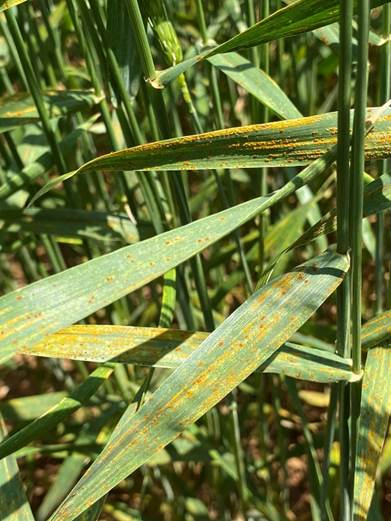 |
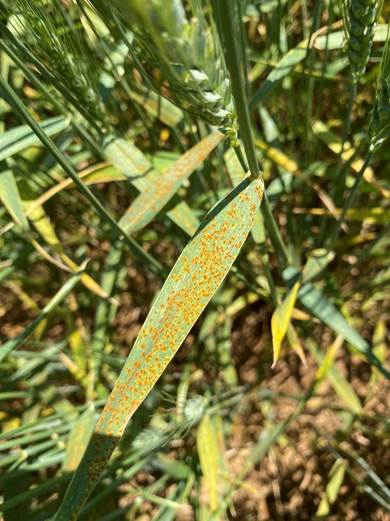 |
 |
Darkened heads were observed at several locations but were most prominent and prevalent at Morris in eastern OK (Figure 2). Darkened heads like this can result from several causes. If Septoria and/or Stagonospora are present on lower leaves, these fungi can move up onto the heads and cause a glume blotch that has this appearance. Another possibility is a bacterial disease called black chaff or bacterial streak (Figure 3). Black chaff will occur on leaves (Figure 3; photo on left), but also can move onto heads (Figure 3; center photo). Note on this center photo how the stem (peduncle) immediately beneath the head shows darkened lesions like those on the head. Finally, awns of heads infected with black chaff often show an alternating pattern of dark and white (Figure 3; photo on right). Another possible cause of these dark heads is presence of a gene that confers resistance to wheat stem rust. In this case, the result is not a disease, but rather an association with the presence of that gene. Regarding the darkened heads observed in the trial near Morris, Dr. Silva and I agree it is most likely the majority of the darkened heads observed likely resulted from freeze damage as many of these heads also were totally or partially sterile (see Dr. Silva’s blog at https://osuwheat.com/2021/05/18/freeze-damage-update/). However, Septoria/Stagonospora and black chaff also contributed as symptoms of these diseases were observed in the field.
Figure 2. Darkened heads observed on wheat heads in a trial located in eastern Oklahoma near Morris. These darkened heads were caused by Septoria/Stagonospora, black chaff and/or freeze. [Photo credits – Dr. Amanda de Oliveira Silva; OSU Small Grains Agronomist].
| Figure 2. | |
|---|---|
 |
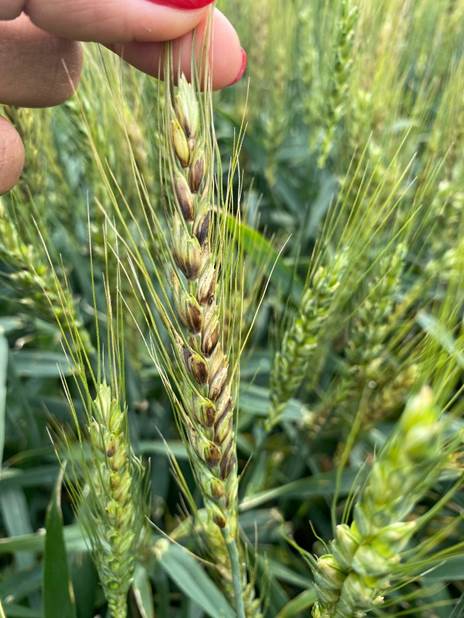 |
Figure 3. Black chaff (bacterial streak) on wheat at Chickasha in 2013. Photo on the left is of a leaf infection; center photo shows darkening of the head and the stem just beneath the head; photo on the right shows the alternating dark and light pattern often seen on awns of wheat heads infected with the bacterium that causes black chaff. [Photo credits: Dr. Jeff Edwards; Oklahoma State University]
| Figure 3. | ||
|---|---|---|
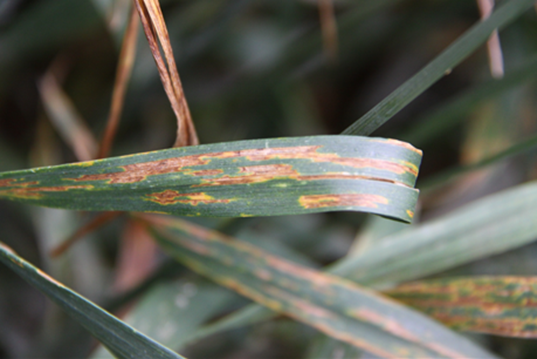 |
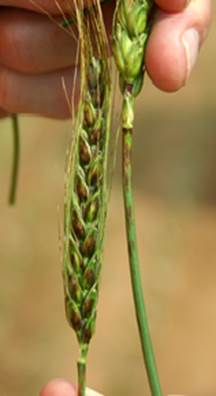 |
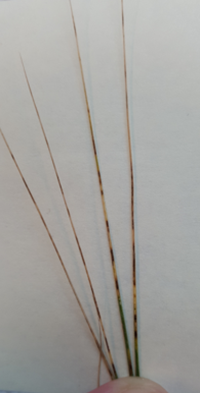 |
A final disease observed this past week was indicated by the sporadic occurrence of white heads in some parts of the field. Examination of plants/tillers associated with these white/yellowing heads revealed symptoms typical of take all root rot (Figure 4). However, I am not yet certain that these tillers had take all as symptoms of other root rots also were present. Hence, samples were brought back to the lab for isolation and identification. Look for an update on this in my next report but be aware there likely will be root rot showing up in some areas of the state.
Figure 4. Symptoms of take all root rot. White heads (photo on left) as the plants mature often indicate presence of a root rot. Lower, blackened stems and crowns of tillers with white heads resulting from take all root rot (photo on the right).
| Figure 4. | |
|---|---|
 |
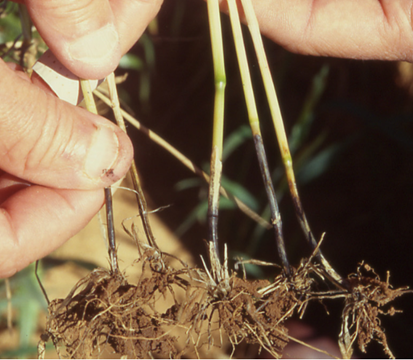 |
This next week marks the end of the wheat field days in Oklahoma with four coming next Thursday and Friday in the Oklahoma panhandle. A complete schedule of the remaining field days can be viewed at: http://wheat.okstate.edu/virtual-plot-tour/2021OSUWheatFieldTours.pdf
